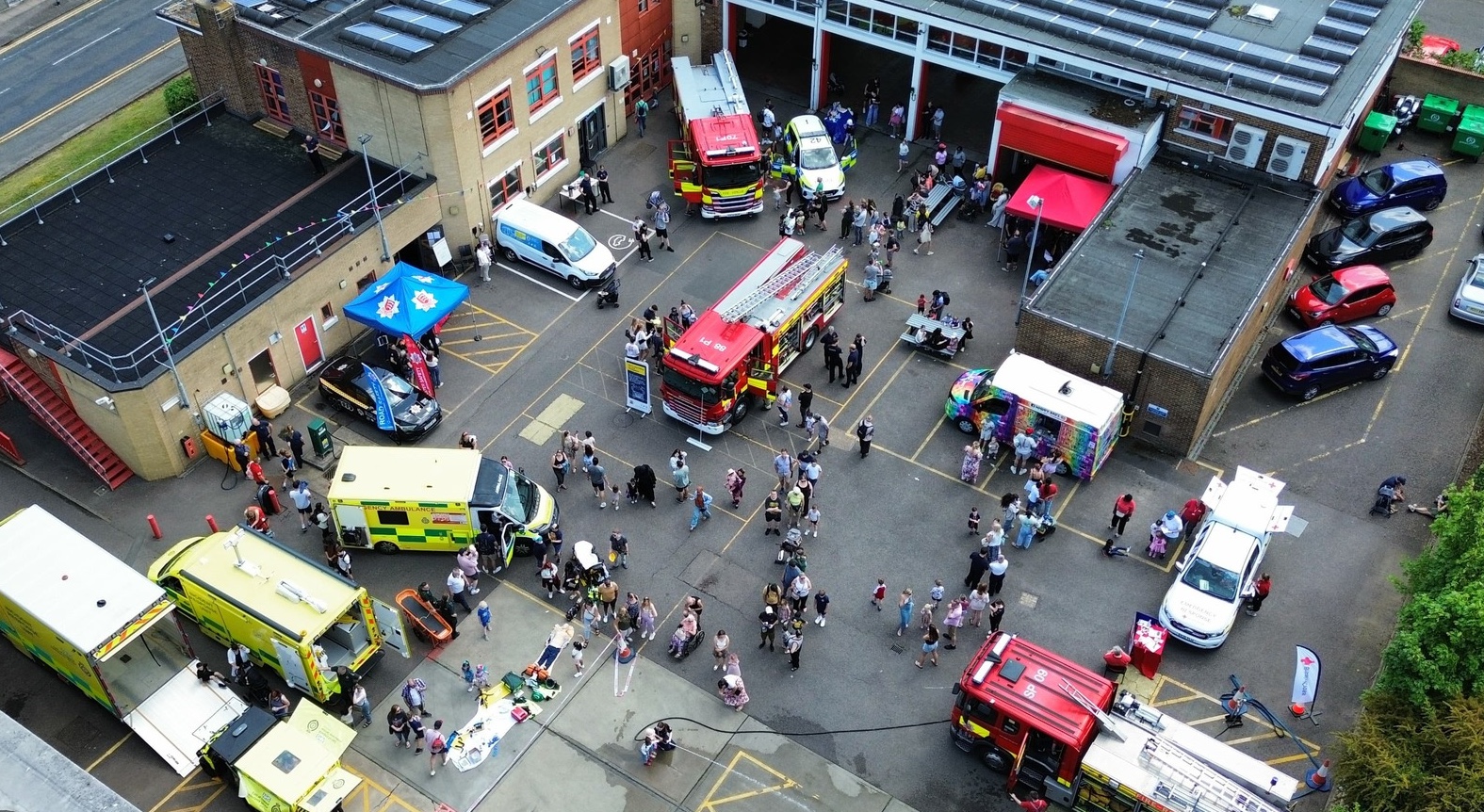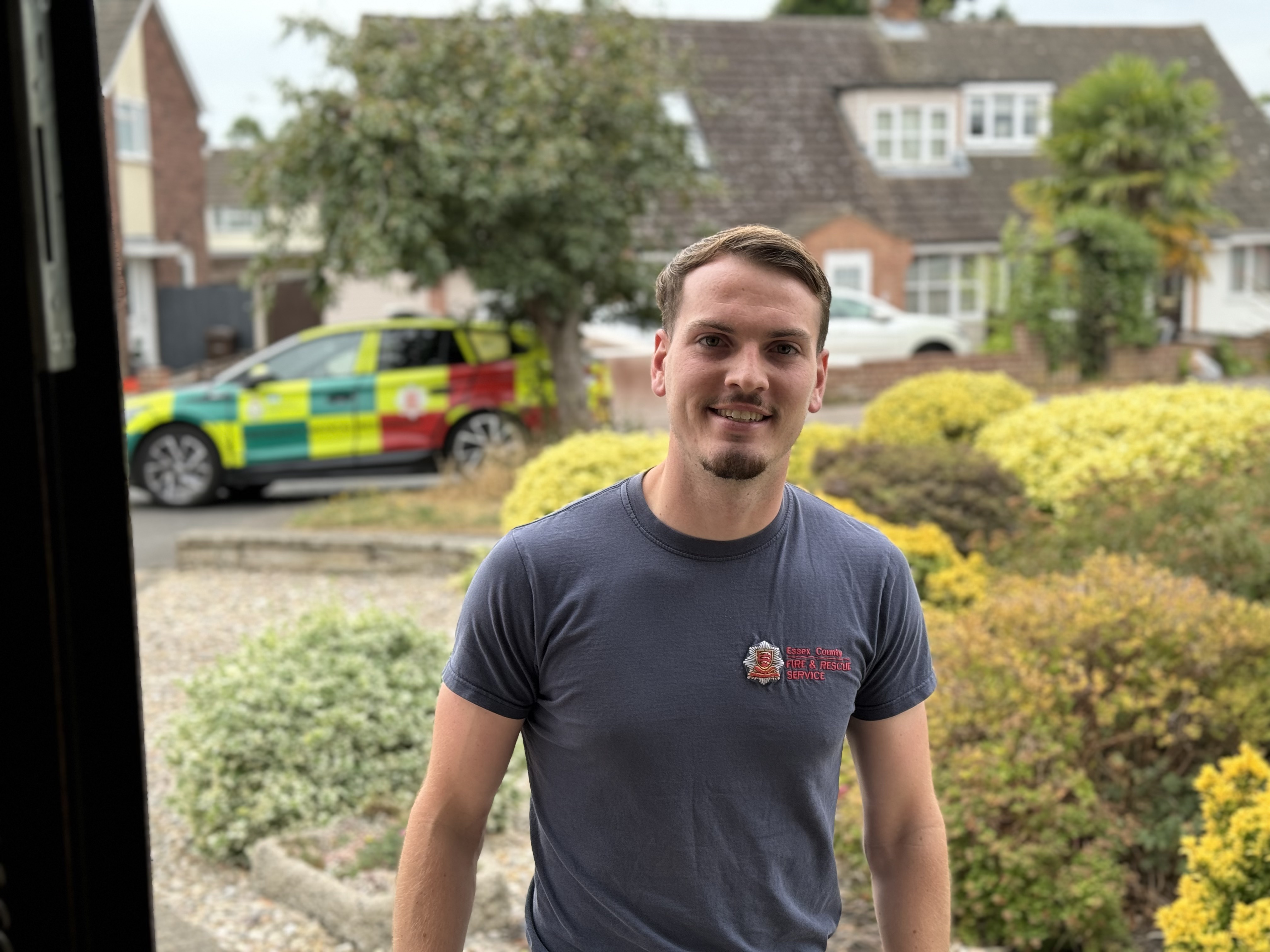Off-Road in Essex
When the Essex County Fire Brigade (ECFB) was formed in 1948 a mixture of old and new fire appliances were inherited from the National Fire Service (NFS) – many were pre-war appliances from the old borough fire brigades that existed before 1941. There were also many wartime utility vehicles brought into service by the NFS. Among these were some Bedford ‘QL’ Water Tenders, inherited from the Army Fire Service. Although converted army lorries, these vehicles had a particular virtue in that they had four-wheel drive, which meant that they could operate off road. They were not really suited to normal fire-fighting duties and their crew accommodation was anything but comfortable. They did however, have a large water tank and two pumps, one on board and one towed. In rural areas they were able to operate on soft ground such as fields and in some cases beaches. In this guise they made a useful asset to the Brigade’s fleet.
Also based on the ‘Bedford ‘QL’ chassis were two Breakdown Lorries. One was based at Ilford Fire station, painted red and was used for emergency rescue work, being equipped with large jacks and gas-cutting equipment. The other was painted dark green and based at the Brigade’s workshops in Lexden, near Colchester. This was mainly used for recovering broken-down fire appliances. Both of these vehicles had ‘off-road’ capabilities. The usefulness of the QL appliances was felt in 1953 when large parts of Essex were inundated with sea water when extra high tides caused the East Coast floods. The high ground clearance of these vehicles allowed them to reach areas that other appliances could not.
In 1949 the Essex County Fire Brigade became one of the first fire brigades in the world to place into service the then new ’Land Rover’. Two appliances, based on this innovative vehicle were converted by Carmicheal and Sons of Worcester and trialed by the Brigade. With a small pump and water tank they were classified as Hose-Reel Tenders. They were so successful that eight more followed between 1950 and 1951. They were really useful for grass and field fires and stayed in service into the 1960s. More Land Rovers were to follow in later years, but for a much different purpose. In the late 1950s a fleet of Dodge Kew/HCB Forward Control Water Tenders came into service with the Brigade. Most were based at rural ‘retained’ fire stations. Although not four-wheel drive, these appliances had a high ground clearance and were often used ‘off road’ when attending grass fires.
Two new Hose Laying Lorries entered service in the ECFB fleet in 1963. Based in Chelmsford and Barking they were built on the rugged Bedford ‘RL’ Chassis and carried two miles of hose. Once again, the off-road capabilities of these vehicles proved very useful. The vehicle at Barking soon departed from the Brigade when the Metropolitan Division of the Essex County Fire Brigade was transferred to the London Fire Brigade in 1965. A further 1960 Bedford RL 4x4 Recovery Vehicle, originally used by the AFS, was based at the Brigade’s workshops at Lexden.
1976 saw the entry into service of three Land Rover Rescue Tenders. These small vehicles were seen to be most useful attending the many road traffic collisions that were happening on the roads of Essex. Three more entered service in 1978. However, these vehicles were short lived in the County and all but one were sold on to the County Cork Fire Service in Ireland. They were replaced by large Major Rescue Tenders.
Bright yellow was the colour chosen for a new Bedford TKM 4x4 Recovery Vehicle which entered service in 1981. Although it would respond to any emergencies, it was based at the Brigade Workshops at Lexden and crewed by workshops staff.
It was almost a decade following the departure of the Land Rover Rescue Tenders before a new and impressive ‘off road’ Light Water Tender entered service with the Brigade, which had now become the Essex County Fire and Rescue Service (ECFRS). Based at Stansted fire station, this rugged four wheel drive appliance was ideally situated close to London Stansted Airport and the mainly rural surrounding area. It saw many years of service with ECFRS.
A spectacular appliance came into service with the Essex County Fire and Rescue Service in 1989, known by the Service personnel as ’Big Foot’ this massive recovery vehicle was capable of operating ‘off road’ due to its 6x6 ‘All Wheel Drive. It had both a ‘Hiab’ type crane and a heavy lift crane.
A more compact type of Light Water Tender was placed in service in 1991. Three Steyr Puch Pinzgaur 6x4 appliances proved to be a great success and three more followed over the next few years. These small, but very useful appliances were extremely popular with the personnel on the stations to which they were allocated and were replaced by very similar, but newer Pinzgaur vehicles in 2005/6. Able to operate over rough terrain, they were particularly suited to the more rural stations but were also capable of performing as the second pump on all types of emergency calls.
The fire service has always had a soft heart for animals in distress and assistance is regularly given when animals need rescuing from the precarious positions that they sometimes find themselves in. In 2010 a special Animal Rescue Unit (ARU) was placed in service by the ECFRS. The powerful Mercedes Unimog 4x4 appliance has excellent ‘off road’ capability, plus a ‘Hiab’ crane for lifting large animals such as horses or cows. In the 11 years it has been in service, the ARU has more than proved its worth, carrying out numerous rescues.
A Ford Ranger was brought into service in 2010 to tow the Rescue Boat stationed at Leigh on Sea. Since then, other Ford Rangers have been added to the ECFRS fleet.
The latest ‘all-wheel drive’ vehicle to enter service with the Essex County Fire and Rescue Service is the Mercedes Benz Sprinter 6x6 ‘Off Road Vehicle’. These new appliances are designed to be adaptable and can have their load changed to meet whatever circumstances they are required for. They generally are fitted out with a small portable pump and hose-reel to deal with grass fires.
M. Beale May 2021
All Fired Up’ is a series of articles written by our Museum volunteers about the history of the fire service in Essex.
Volunteers spend many hours researching the collection, often uncovering untold stories and finding interesting facts that would otherwise be lost.
To share these invaluable snippets of history with you we are making some of this research available. Read the full list here.


